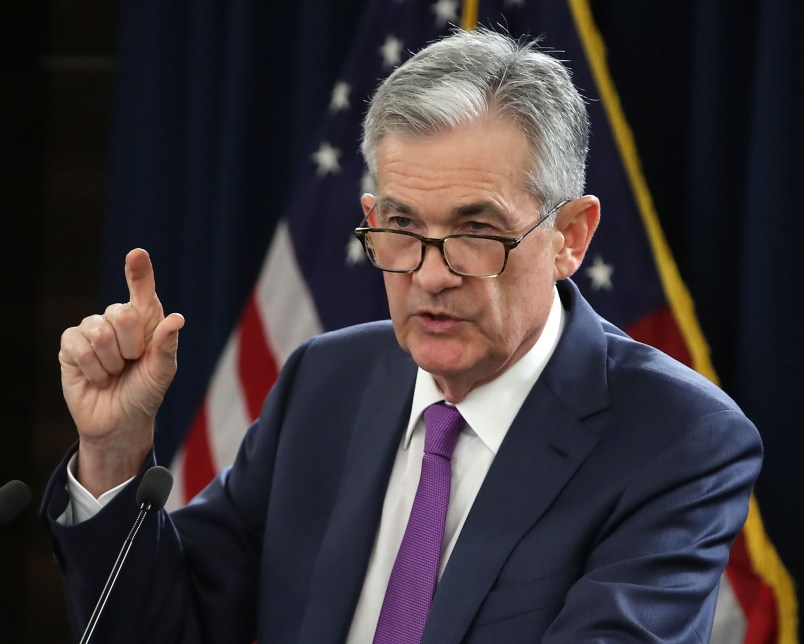WASHINGTON (AP) — The Federal Reserve is proposing to ease requirements for holding capital and cash for U.S. banks that are big, but not as big as the Wall Street mega-banks.
The Fed’s proposal issued Wednesday is the latest move by federal regulators to relax government oversight of financial firms in line with President Donald Trump’s objectives.
The Fed governors, by a 3-1 vote, put out the proposals for public comment. They also are looking to ease the schedule for the agency’s “stress tests” for banks, based on their size and risk.
Fed officials are aiming to relax rules implemented under the 2010 law enacted in response to the financial crisis that pushed the economy into the Great Recession.
Gov. Lael Brainard, the only Fed board member not appointed by Trump, was the dissenting vote. She warned that the moves would raise the risk of another taxpayer bailout of big banks.
A new law enacted in May dismantled a chunk of the Dodd-Frank rules framework for banks installed to prevent a recurrence of the 2008 crisis. The Republican-led legislation was aimed at helping small and medium-sized banks, including community banks and credit unions. It multiplied by five — to $250 billion — the level of assets at which banks are deemed so big that if one were to fail it would create major havoc. Those banks are subject to stricter capital and planning requirements.
The new law meant that regulations and oversight were eased on more than two dozen financial institutions with assets between $100 billion and $250 billion, including BB&T Corp., SunTrust Banks, Fifth Third Bancorp and American Express.
Brainard said the new Fed proposals reach beyond that law by easing requirements for banks with assets from $250 billion to $700 billion. The proposals “weaken the (capital) buffers that are core to the resilience of our system,” she said before the vote. “This raises the risk that taxpayers again will be on the hook.”
But Randal Quarles, the Fed’s vice chairman for supervision and the chief architect of the proposals, said they follow an important principle: that the level of regulation of a bank should match its characteristics.
Generally, he said, U.S. banks with assets between $100 billion to $250 billion don’t show “meaningful levels” of complexity and tight connection with the financial system.
A capital buffer is designed to cushion the shock to a bank of unexpected losses. Capital is long-term money that a bank can draw on to make loans; it comes mostly from the bank’s shareholders and profits it keeps.
The stress tests assess whether a bank has a big enough capital buffer to survive an economic shock and keep on lending.
The 2010 Dodd-Frank law was enacted by President Barack Obama and the Democrats who then controlled Congress. It aimed to restrain banks, which received hundreds of millions in taxpayer bailouts, from the kind of reckless practices that many blamed for the crisis.
Trump and Republican lawmakers have argued that the stricter regulations have constrained lending and economic growth.
The new Fed proposals also would modify the so-called “liquidity” requirements for big banks to hold enough cash, government bonds and other high-quality assets to fund operations for three to four weeks during a time of financial distress. The idea is to help ensure that a bank’s cash resources — not taxpayers’ money — would provide the needed support for it to withstand stress.
The proposed change would eliminate liquidity requirements for most banks with $100 billion to $250 billion in assets.
At the other end of the scale, the proposals would keep the current requirements for capital, liquidity and stress testing for mega-banks with $700 billion or more in assets, the Wall Street powerhouses deemed so big and interwoven with the financial system that each could threaten its stability if it failed. They include JPMorgan Chase, Goldman Sachs, Bank of America and Citigroup.







Prediction: Every one of these second-tier banks will be bailed out in the next financial crisis.
Relax! What could possibly go wrong?
BUbble, bubble toil and trouble. A curse from the pages of MacFed
Where’s Eustace? We need the plutocrat’s perspective here.
The bubble is already about to burst, so yeah, let’s relax the rules so that the financial types can steal even more. Smart, smart, smart move. Even the WSJ is saying a serious recession is just around the corner, others are saying 2020, just in time for the next election.
Examples:
Come 2020, the stage will be set for another downturn – and, unlike in 2008, governments will lack the policy tools to manage it.
Are we headed for a recession in 2020? Commonwealth CIO Brad McMillan says while a downturn may be ahead…
Forbes, The Guardian, Bloomberg, USA Today, FNLondon, Pimco, and others all have been writing about the coming recession.